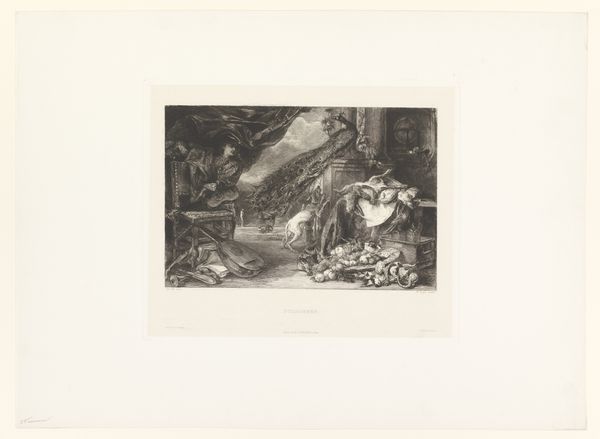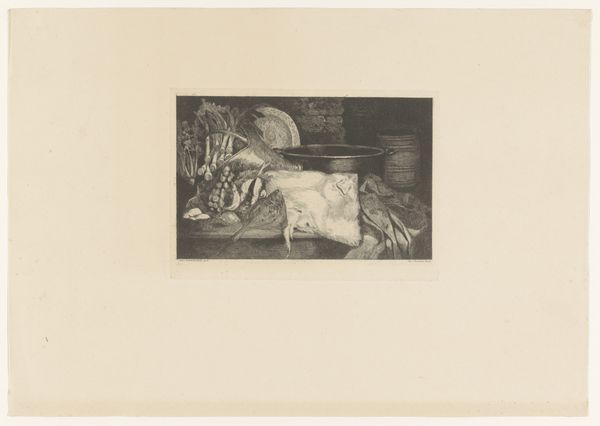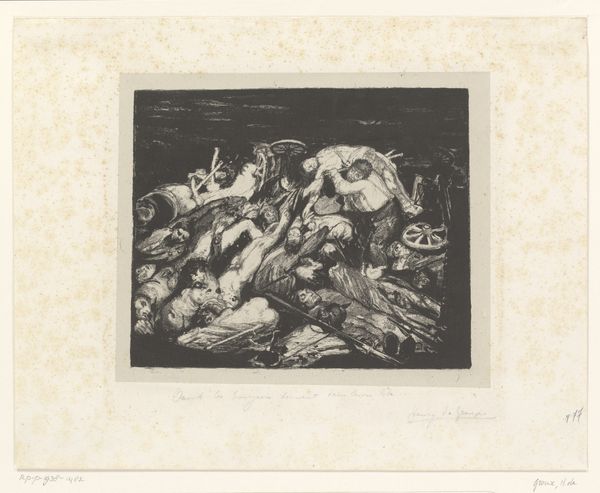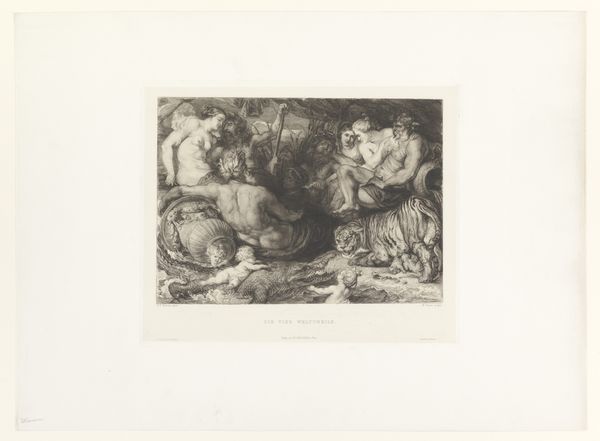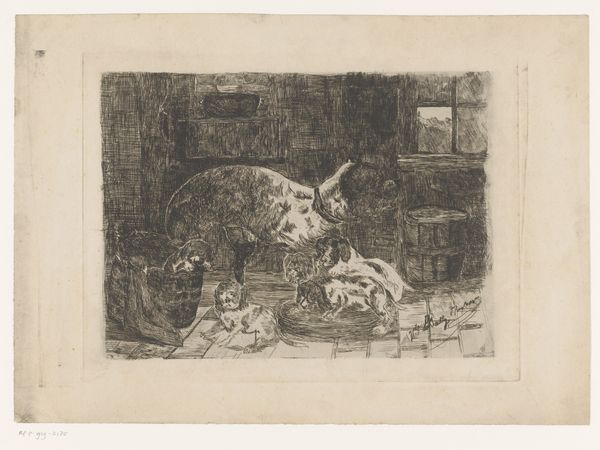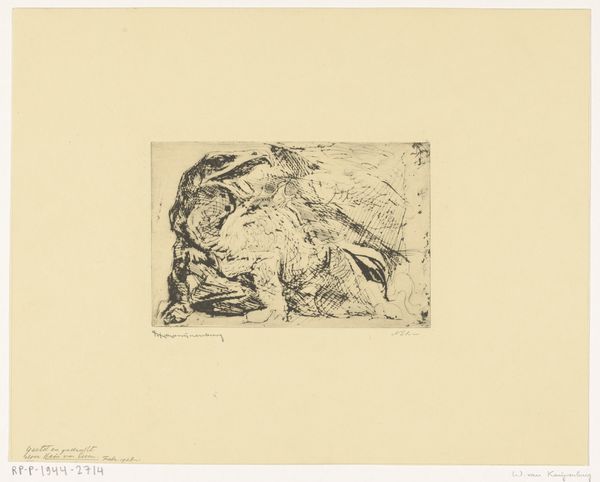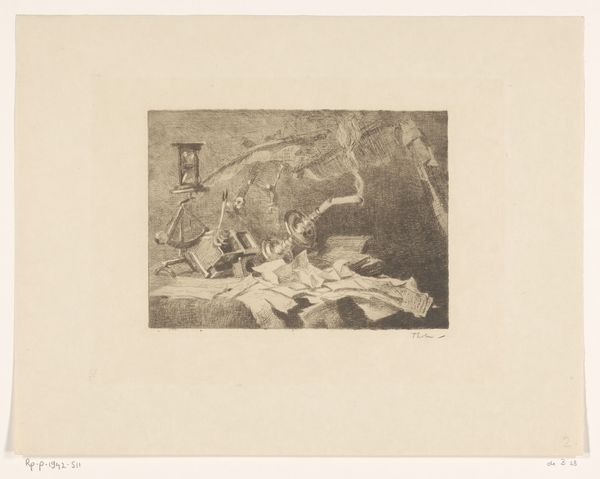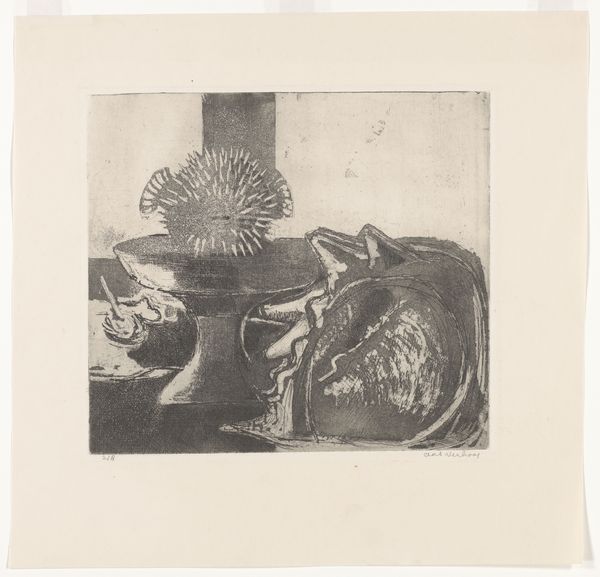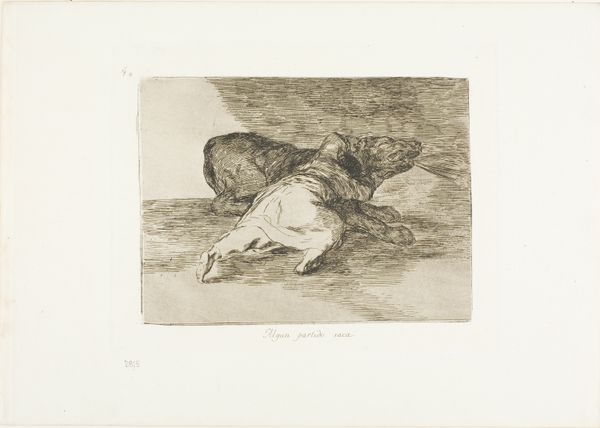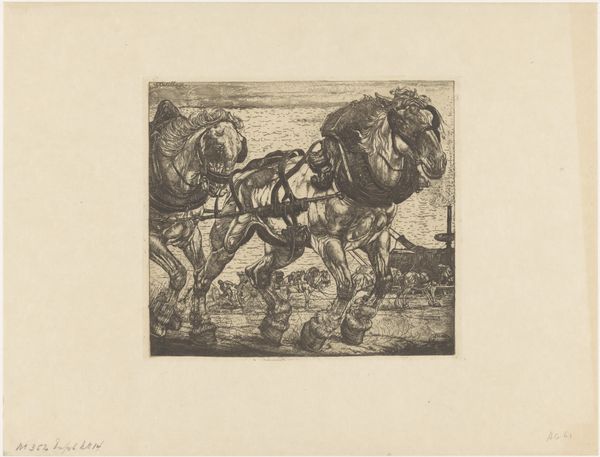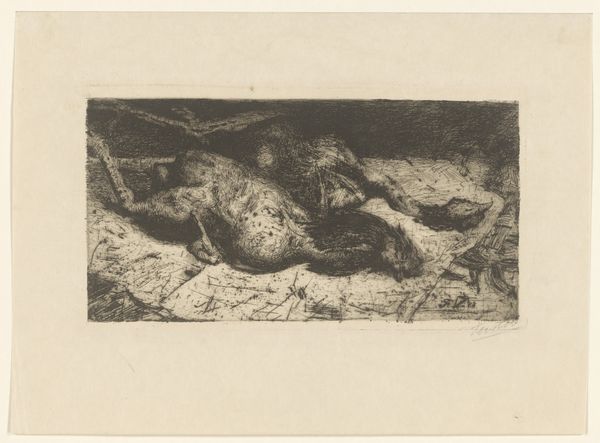
drawing, print, etching, paper, ink, engraving
#
drawing
#
animal
#
ink paper printed
# print
#
etching
#
old engraving style
#
landscape
#
river
#
paper
#
ink
#
horse
#
symbolism
#
watercolour illustration
#
natural palette
#
engraving
#
realism
Dimensions: height 250 mm, width 305 mm
Copyright: Rijks Museum: Open Domain
Editor: Here we have Pieter Dupont’s “Cheval blessé,” created around 1901, an etching and engraving printed on paper. It strikes me as deeply melancholic, almost a lament. What stands out to you? Curator: Indeed, the overwhelming feeling is one of sorrow, heightened by the graphic nature of the print. Consider the time this piece was created; the turn of the century was marked by rapid industrialization, urbanization and burgeoning social movements. How might an image like this—a fallen horse, seemingly symbolizing rural hardship—speak to these socio-political anxieties? Editor: I see what you mean. The horse, usually a symbol of power, is now vulnerable, maybe mirroring the anxieties about the changing world. Is this vulnerability intended for a particular audience? Curator: Undoubtedly, Dupont sought to connect with an audience familiar with rural life or perhaps nostalgic for it. Prints like these were often circulated amongst the middle class, a rapidly expanding segment of society. By evoking empathy, the artist encourages us to consider those marginalized by progress and industrial change. Editor: That’s fascinating. So it’s not just about the animal itself but a commentary on society's values at the time. Do you think the landscape and the man in the background emphasize the role that institutions can play in determining artistic interpretation? Curator: Absolutely! Look closely at the man: he’s not actively helping. What statement is Dupont trying to make about compassion, empathy, or perhaps the indifference of institutions in the face of individual suffering? Editor: I hadn't considered the man's inaction so pointedly. Viewing the artwork through that historical and institutional lens really illuminates the print’s profound meaning. Curator: It reveals how even seemingly simple images can function as powerful social critiques. Understanding the historical and social context enriches our understanding of art’s ability to respond to and shape our world.
Comments
No comments
Be the first to comment and join the conversation on the ultimate creative platform.

